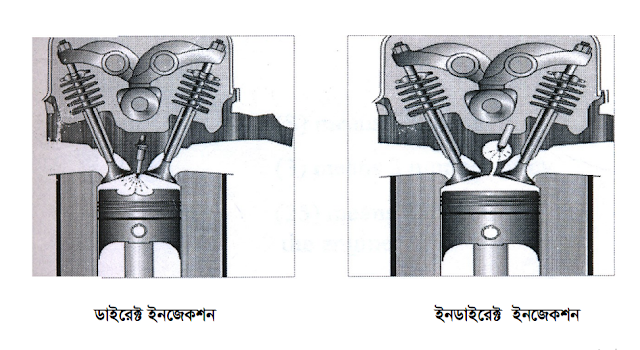What is the engine?
The source of engine power is a type of automatic device that converts heat energy into mechanical energy by studying fuel, petrol, diesel, kerosene, natural gas, etc. It generates energy by itself and moves with its own energy. Such as automobiles.
Types of engines.
The engine can be divided into two main parts. Such as 1. internal engine, 2. External engine.
1. Internal engine: An internal combustion engine The combustion of an engine that takes place in a cylinder is called an internal combustion engine. Includes diesel engine and petrol engine.
2. External engine: The combustion of the engine is done outside the cylinder. It is called an external engine. Including such people metic, engine informed engines.
The internal combustion engine is again divided into two parts 1. Two-stroke engine 2. Four-stroke engine. Two-stroke engines can be petrol and diesel. four-stroke engines can be petrol and diesel.
There are two types of diesel engine injection: 1. Direct injection, 2. Indirect injection.
Bore: The diameter of the cylinder is called the bore.
Stroke: The distance covered by the piston-cylinder once from TDC to BDC or from BDC to TDC is called the stroke.
 |
Diesel engine injection |
Horsepower: In the past, a lot of work was done with the help of a horse. If a horse can cover a distance of 220 feet with an object weighing 150 pounds in one minute, then the efficiency of that horse is one horsepower.
Suction Stroke:
This cycle begins when the piston starts coming down from the top edge of the cylinder to the top edge of the cylinder called the top dead center or TDC. The piston cannot go outside of this TDC in any way. This suction valve will open when the piston starts to descend and air will enter the cylinder. The edge at which the piston can descend is called the bottom dead center or the crankshaft will rotate halfway from BDC to BDC. When the piston descends to the BDC the cylinder will be filled with air and the suction valve will close.
Compression cycle:
The compression cycle is followed by the suction cycle. Both the suction valve and the exhaust valve of this cycle are closed. As the piston moves from BDC to TTC, the air inside the cylinder starts to contract. The result is a temperature increase of about 520 to 550 centigrade. The crankshaft rotates halfway as the piston moves from BDC to TDC. The resulting crankshaft rotates once to complete the suction contraction cycle.
Power cycle:
The power cycle begins with the help of an injector into the heated air by throwing diesel into small particles like fog. Instantly the diesel caught fire and began to burn.
This combustion of oxygen and diesel in the air causes a strong pressure on the piston head towards the bottom of the piston. That is, he moved to BDC. During this cycle, the crankshaft rotates more than half. And the crankshaft rotates one and a half times in the above three cycles.
Exhaust cycle:
This is the end of the cycle. At the beginning of the cycle, the exhaust valve will open. The piston comes from BDC to TDC and expels all the smoke from the combustion chamber. The crankshaft rotates twice and the exhaust valve closes. Then the piston starts coming from TDC to BDC again, the suction valve opens and the suction cycle starts.
Thus the same sequence will be repeated and there will be a power cycle between the four cycles. In other words, the crankshaft has to rotate twice to get a power cycle.
It is attached to the engine intake manifold. Advantages of the turbocharger: 1. This increases the power of the engine. 2. Fuel cost is low. 3. Increases the lifespan of engine parts.

